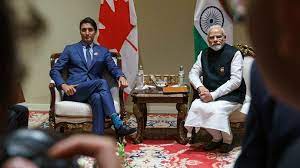A meeting in-person after a long hiatus
India and China engaged in diplomatic talks on the 22nd of February 2024, in Beijing, China. The talks were under the Working Mechanism for Consultation and Coordination (WMCC) on India-China Border Affair. The WMCC was established in May 2020 after a duel along the Land of Actual Control (LAC).
The meeting was led by Joint Secretary (East Asia) Shilpak Ambule, External Affairs Ministry, from India side and Hong Liang, Director General of the Boundary and Ocean Affairs Department of the Foreign Ministry, from China side. Mr. Ambule also had a meeting with Hua Chunying, the Assistant Minister of Foreign Affairs, China.

The two sides reviewed the conditions along the LAC in the western sector of the India-China border areas and deliberated over the disengagement of troops in the other remaining regions, during the discussion. The Ministry of External Affairs (MEA), in an official statement said, “the disengagement will benefit in restoring peace and tranquility along the border areas shared by the two nations”.
Prolonged tensions between India and China
The sour relationship between India & China exists because of a poorly defined and shared 3,400 km long border. But, the connection worsened in May 2020 after a petrifying face-off that took place between the troops on either side of the LAC in the Galwan Valley.

Although, a few more confrontations took place after it, such as in the Tawang sector of Arunachal Pradesh in December 2022 and near Sikkim between Bhutan and Nepal in January 2021, the contestation of 2020 is the most focused one as it stalled the conversation perfunctorily.
The two sides can be friends
“India and China will account for half of the global economic growth in 2024”.
International Monetary Fund (IMF)
The bitterness between Delhi and Beijing is not alien and the reason behind it is intelligible. Yet, the two countries can think of coming together to shake hands.

India and China are not only neighbours but, are also key prospects for each other in different domains with common vested interests. One such instance is of ‘Trade’.
In 2020, when the two countries were crippled by the pandemic and unrest, it was found that China emerged as India’s largest trading partner. In 2021, India-China trade rose to $100 billion. This figure actually has a tendency to see an upsurge if supplemented with consistent efforts to resolve the tensions along the border areas.
Furthermore, the giant nations grace each other with enormous market size. If one sees the presence of Haier, Huawei, and 3560 companies in India having Chinese directors. Then, on the other hand, in China, one observes establishments of some major Indian IT sectors such as TCS, Infosys, NIIT, etc.
Another illustration is the ‘Geography’ of the two areas. With the climate crisis hovering, cooperation between India and China has become essential in light of the close vicinity with/of the water bodies. The two sides collectively need to work for curtailing the impact of melting glaciers from where major rivers of India and China originate, such as- the Indus, Brahmaputra, Ganges, Mekong, and Yangtze.
The areas of collaboration between the two are copious.
2024 is crucial for India
In 2024, India is hosting the G-20 Presidency. It has a spectacular platform to bring various nations together and establish New Delhi as a global leader.

Concerning this setting, making the strife between the two mild can put India in great shape. If India strikes a balance at LAC without compromising on its solid diplomacy then, the presidency has the potential to express India as an intelligent nation, globally.













